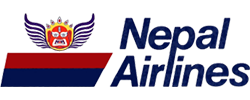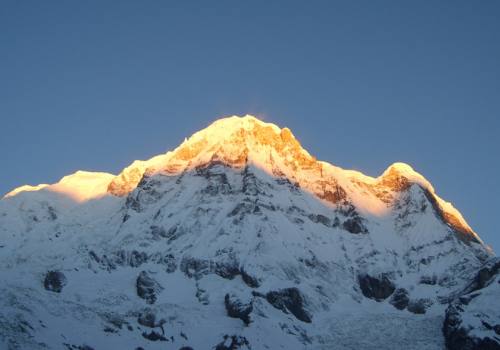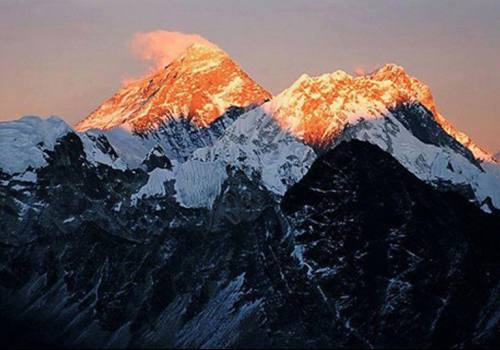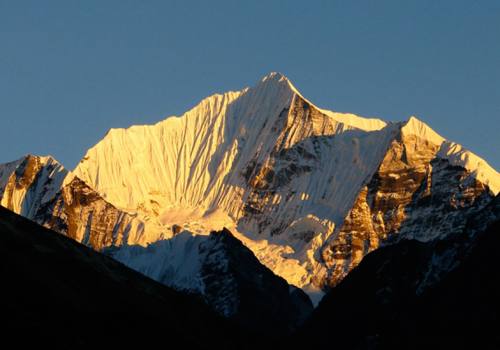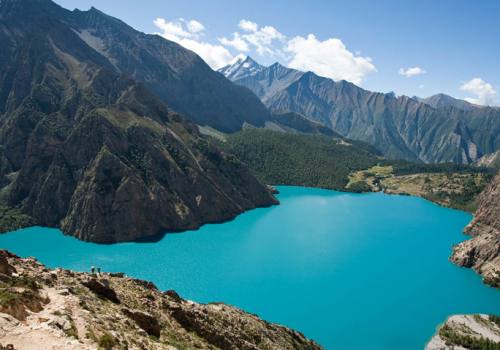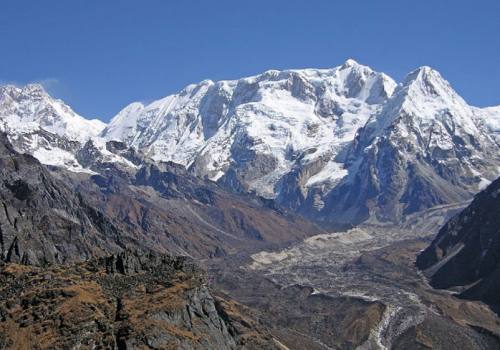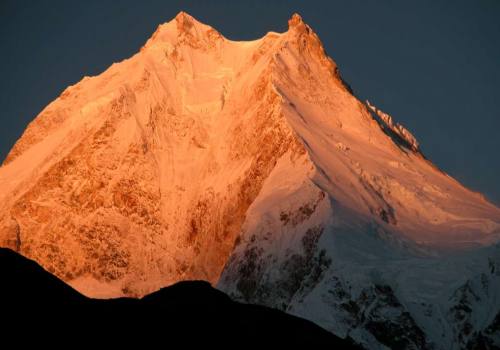Trekking in Nepal
Trekking is no doubt the most preferred activity among tourists visiting Nepal. Nepal offers a variety of choices to would-be and experienced trekkers ranging from easy and short treks to the most scenic and physically demanding long trekking trips. Annapurna Trek and Everest Base Camp of Nepal are two of the world's best trekking routes. In fact Everest Base Camp has been listed in the 20 journeys of a lifetime by the Observer and Annapurna Circuit as No. 1 hiking and trekking trip by Explore. There are more than two dozen trekking routes that take you to the heart of the Himalayas, into the daily lifestyles and culture of village people in Nepal offering you a rare glimpse of nature and wildlife in its pristine form. Most of the popular treks pass through protected and conservation area. Trekking from Nepal to Mt. Kailash and Lake Mansarovar in Tibet is a widely popular activity for majority of trekkers as it is also offers the best possible way to explore trans-Himalayan landscape.
Nepal is the birthplace of trekking. During the early sixties some explorers and climbing enthusiasts discovered the recreational pleasure of walking pass forests and hills. Originally, it was a hike through valleys, steep hills and rugged ridges in an effort to reach the base of Himalayas spreading over multiple days. This act soon evolved as Trekking and grew in popularity in no time. Even a casual walk up smaller hills and ridges as long as it provided the fun and pleasure of walking and watching the scenery along was termed a Trek.
Today trekking holds wider scope and purpose. It has become popular sports all over the world, an ever-growing cultural fad for a group of adventure tourists. Trekking is entirely an outdoor sport filled with challenges and adventure of walking over long distances, for long hours, often along rugged paths and stretched over multiple days. Food and necessary equipment such as tents and sleeping bags are carried along. There are in essence two types of trekking currently in fashion: Tea-house trek and Camp trek. Tea-house trek will involve putting up in lodges along the way whereas Camp trek, as the name suggests, would require the trekking team to carry camps and tents. Likewise trekking can be done individually or as part of an organized group depending upon one's interests.
There are so many benefits of trekking. You can see new places and meet people and at the same time learn and exchange knowledge and wisdom. Trekking not only provides rare occasion of visiting remote places and observing local culture and lifestyles, it also offers the thrill of adventure and the unprecedented view of nature's gift. One can observe Himalayas up close, climb smaller Himalayan peaks and feel firsthand culture and tradition that have remain unchanged for thousands of years. In addition, trekking offers relaxation, relieves mind stress and provides physical and psychological rejuvenation.
Depending on the geographic locations, trekking routes can be broadly divided into three categories: simple, moderate and strenuous. Simple trekking routes will involve walking along well maintained trekking paths, spending around 3-4 hours walking every day and visiting villages. This trekking can be done by anyone as long as he or she is able to walk. Moderate types are bit difficult in that you will be crossing hills, walking along river valleys and rapidly gaining in altitude. A minimum of 5 hours is spent every day in trekking and you will be reaching a height of as much as 4000m. The third and the most difficult type one is Strenuous trek which takes you beyond 5000 m in altitude and often involves crossing high passes. You will often be entering into inhabited areas, walking over ridges and rugged paths and charting your own routes into the wilderness. To do such a trek, a prospective candidate is required to hold previous experience in trekking and possess technical knowledge and deep interests in wilderness.
Trekking in Nepal is one of the most popular and widely chosen tourist activities. Around 20 % of the total tourists who come to Nepal come for either climbing or trekking. Nepal not only offers some of the best trekking destinations in the world but also three generations of highly qualified and capable guides who can make your trek a lifetime experience. The fact that Nepal has eight of the world's top ten Himalayan peaks speaks volume about the potential of Nepal as trekking and climbing destination. Annapurna, Everest and Langtang which count among the world's best trekking destinations lies in Nepal. Over the years many pristine and remote areas have been opened for trekking activity. Under the government regulation, all the trekking areas in Nepal charge certain permit fees against trekkers. There are two types of trekking destinations in Nepal, namely Regular trekking routes and Restricted ones. Regular trekking routes are those where both individual (FIT) and organized groups are allowed provided they pay the required entrance or permit fees. Places like Everest, Annapurna, Langtang are all regular trekking routes. Another is Restricted areas. As the name suggests the area is restricted and controlled by the government to preserve the local culture and nature. Such areas will require trekkers to pay comparatively higher fees (up to US $700 per week), maintain strict code of ethics while in the area, and finish trekking within a week's time. Further only organized groups are allowed to trek in such places. Dolpa, Upper Mustang, Manaslu are a few of the restricted areas.
Best Seasons for Trekking
Autumn (mid Sep-early Nov) and Spring (March-May) are considered the best seasons for trekking in Nepal. Throughout these seasons, the weather is balmy, skies are clear and air is fresh. It is also highly likely for one to have obstructed views of the Himalayas and nature at its best. Moreover, autumn is also the season of festivals in Nepal. A visit during this time of the year is worth for you can be part of the local festivals. Spring season is warmer and also a time when varied species of flower bloom in profusion. A trek to the hills and Himalayas during the season will greet you with the splendor of natural beauty. High passes and high pastures in the Himalayas remain free of snow and are easily retraceable.
However, there are certain areas in Nepal like Upper Mustang and Manang where trekking is not only possible but perfect during Summer season. These areas are the extension of Tibetan plateau and lie in the shadow region. Because of this reason, the areas receive no or very less rain even during rainy season.
What you need for Trekking ?
First of all before you chose any treks, make sure that you meet certain criterion related to physical fitness. This is very important if you are considering Moderate and Strenuous treks. Feel free to take advice from us before you take further decisions.
It is necessary for you to have your own set of trekking equipment such as camps, tents, sleeping bags, towels, a pair of trekking boots, sun glasses, and other commodities. Nevertheless most of the trekking companies do not require you to carry tents, sleeping bags and mattresses. You can hire tents and sleeping bags from our company or any of rent and hire shops in Kathmandu.
We also advice you to have travel insurance since there are no such facilities offered to tourists in Nepal. So you need to have a policy from your country before you come to Nepal. Should you have any emergency while on trek, you will be provided with evacuation services like helicopter rescue after confirming your insurance policy.



